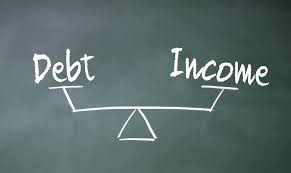 Most mortgage programs today have loan amount limits in place. The exception is USDA and VA Loans. For standard Conventional loans in 2024, the limit for single-unit homes is $766,550 in most locations. However, this can be as high as $1,149,825 in higher-cost locations like California, South Florida, New York, DC, etc. Loan limits are based on certain factors like the property location (state/county) and the number of units.
Most mortgage programs today have loan amount limits in place. The exception is USDA and VA Loans. For standard Conventional loans in 2024, the limit for single-unit homes is $766,550 in most locations. However, this can be as high as $1,149,825 in higher-cost locations like California, South Florida, New York, DC, etc. Loan limits are based on certain factors like the property location (state/county) and the number of units.
FHA loans have max limits of $498,257 in most locations, again this limit is higher in more costly housing locations. See the complete list of FHA loan limits on the HUD website here.
USDA loans do not have an official loan cap in place. Instead, home buyers qualify based on their debt-to-income ratios. Since USDA has household income limits in place to be eligible, this naturally limits the loan amounts of the program.
 First, let’s discuss debt-to-income ratios and what they mean. Buyers have (2) separate debt ratio numbers, their front-end ratio, and the back-end ratio. The front-end debt-to-income ratio (DTI) calculates how much of a buyer’s gross income is going toward housing costs only. This includes principal, interest, mortgage insurance, taxes, and home insurance. This number is divided based on the buyer(s) monthly gross income. USDA generally limits this number to 29% of the buyer’s gross monthly income.
First, let’s discuss debt-to-income ratios and what they mean. Buyers have (2) separate debt ratio numbers, their front-end ratio, and the back-end ratio. The front-end debt-to-income ratio (DTI) calculates how much of a buyer’s gross income is going toward housing costs only. This includes principal, interest, mortgage insurance, taxes, and home insurance. This number is divided based on the buyer(s) monthly gross income. USDA generally limits this number to 29% of the buyer’s gross monthly income.
Now the back-end ratio calculates the percentage of gross income going toward the housing payment PLUS all the other types of debt like credit card payments and car loan payments. USDA generally limits this number to 42% give or take.
Example #1: Let’s say Jeff wants to purchase a home in Alachua County Florida. The USDA housing income limit for this county is $110,650 per year for a family of 1-4 members. Jeff is single and makes a gross income of $50,000 per year, so he is well below the county set eligibility income limit. Divide $50,000 by 12 months and Jeff’s income is $4,166 per month. Remember that 29% of gross monthly income is the limit for housing costs, so 29% of Jeff’s income allows him to qualify for a housing payment of up to $1,208 per month.
Depending on the current interest rates, property taxes, and home insurance costs, Jeff would qualify for roughly a $175,000 home. *This is assuming Jeff meets all the other qualifying requirements and his total debt ratio is below 41%.
Example #2: Beth wants to purchase a home in St. Johns County Florida – the USDA income limit is also currently set to $110,650. Let’s assume Beth has zero debt and her yearly gross income is $85,000 per year. $85,000 Divided by 12 = $7,083 per month. 29% of $7,083 = $2,054 – Beth’s max allowed housing expense.
Under this example, Beth would qualify for approx $335,000 home. Beth represents close to the highest allowable USDA loan size for a family of 1-4 members.
Keep in mind that USDA household income limits are based on many factors like state, county, household size, and other factors. Allowable income limits can be well over $140,000 per year for larger families with 5+ members.
Do you have questions about income and payment calculations or loan approval? Please contact us today by calling the number above, or just submit the Info Request Form on this page to speak to a loan specialist right now.
